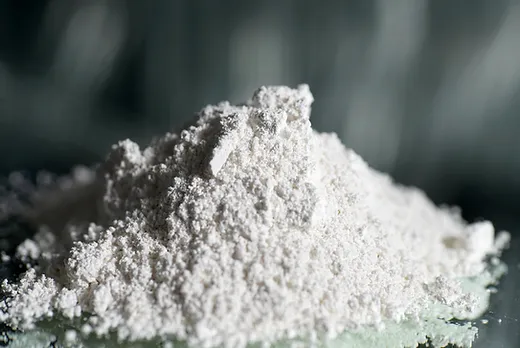

Calcium hydroxide (Ca(OH)2) is a soft white powder that is extensively used as a raw ingredient in the chemical industry. It is formed after calcium oxide has been combined with water. It has two hydroxide Ions (OH) for each calcium ion (Ca2+). The chemical is ionic with electrolytic and aqueous dissociations, both of which produce calcium ions and hydroxide.
It is known by numerous names, including hydrated lime, slaked lime, cal, and picking lime. Calcium hydroxide is utilized in numerous applications, such as food preparation, and is classified in the form of the E code E526. Limewater is also known as lime milk, is the most common term used to describe the water-based solution that is saturated that contains calcium hydroxide.
A few of the most significant properties can be shown below.
| Chemical Formula | Ca(OH)2 |
|---|---|
| IUPAC name | Calcium Hydroxide |
| Molecular Weight/Molar Mass | 74.093 grams per mole |
| Density | 2.211 grams per cubic centimetre |
| Appearance | White powder or colourless crystal |
| Acid Insoluble As (SiO)2 | 0.20 ± 0.60 |
| Melting Point | 853 K |

Calcium hydroxide is typically made by reaction of Calcium oxide (CaO) with water (H 2O). The chemical reaction is exothermic in nature, meaning that an enormous amount of heat is produced.
CaO + H 2O + H 2O = Ca(OH) 2
As part of treating sewage, the calcium hydroxide is utilized to clarify the water.
Calcium hydroxide can provide many advantages, such as:
Calcium hydroxide can be a diverse and widely used chemical compound, with uses ranging from construction and water treatment as well as food production and agriculture. Its advantages, in conjunction with the right safety precautions, are a great source for many industries. No matter if you're an expert or a homeowner, familiarizing yourself with the functions and precautions to take with calcium hydroxide will help you get the most benefit from the versatile chemical.
Shaurya Minerals is the best manufacturer of calcium hydroxide (also known as hydrated lime or slaked lime), based in Khimsar, Nagaur, Rajasthan. Shaurya Minerals, founded in 2010, the company has deep roots in the lime industry, with its promoters having over four decades of experience since 1981. We operate a high-capacity, state-of-the-art production facility that can produce up to 75,000 MT of hydrated lime per year, complemented by an additional 40,000 MT from its associate concerns. Their calcium hydroxide is offered in multiple purity grades (from ~70% up to ~94% Ca(OH)₂), catering to a wide range of industrial applications—such as water treatment, construction, metallurgy, chemicals, and agriculture. Known for combining advanced technology (including vertical shaft lime kilns) with rigorous quality control, Shaurya Minerals emphasizes customer satisfaction, efficient delivery, and cost-effective solutions.
For more information about calcium hydroxide, contact us.